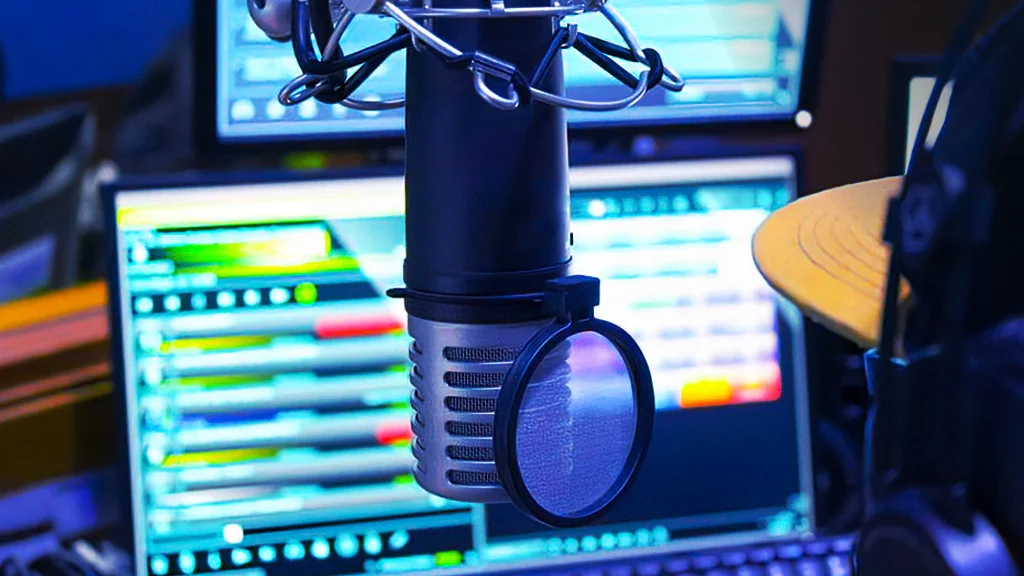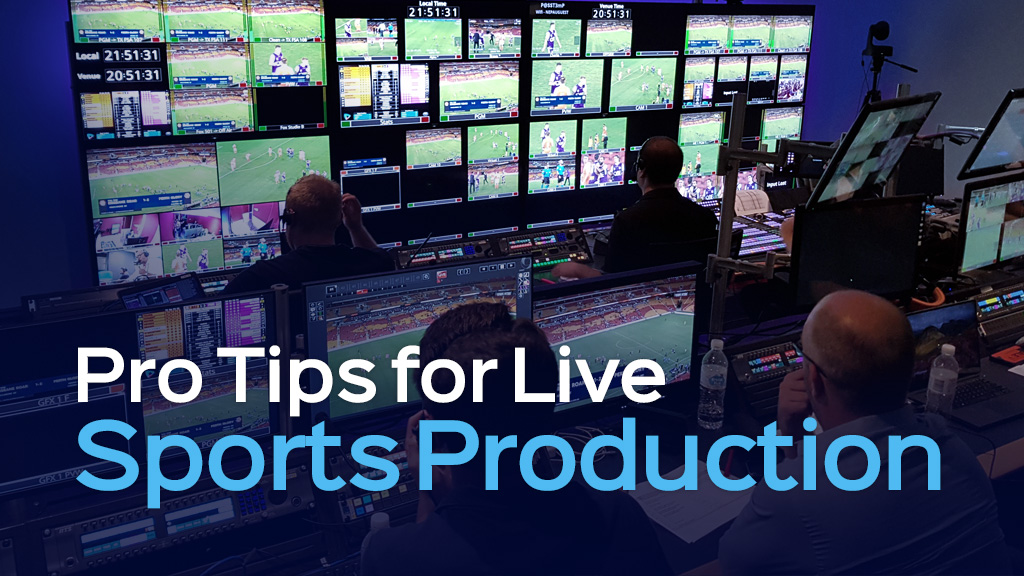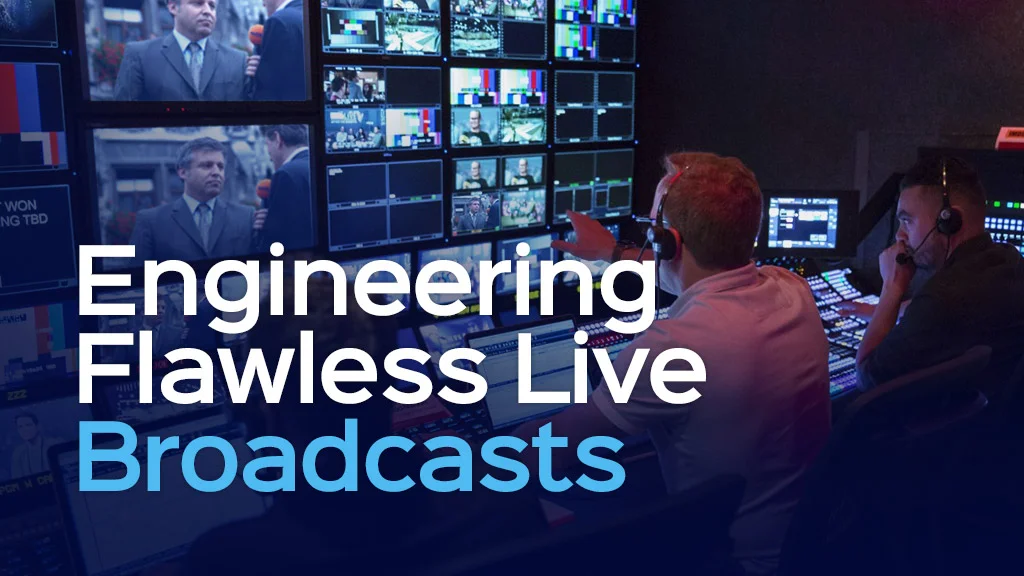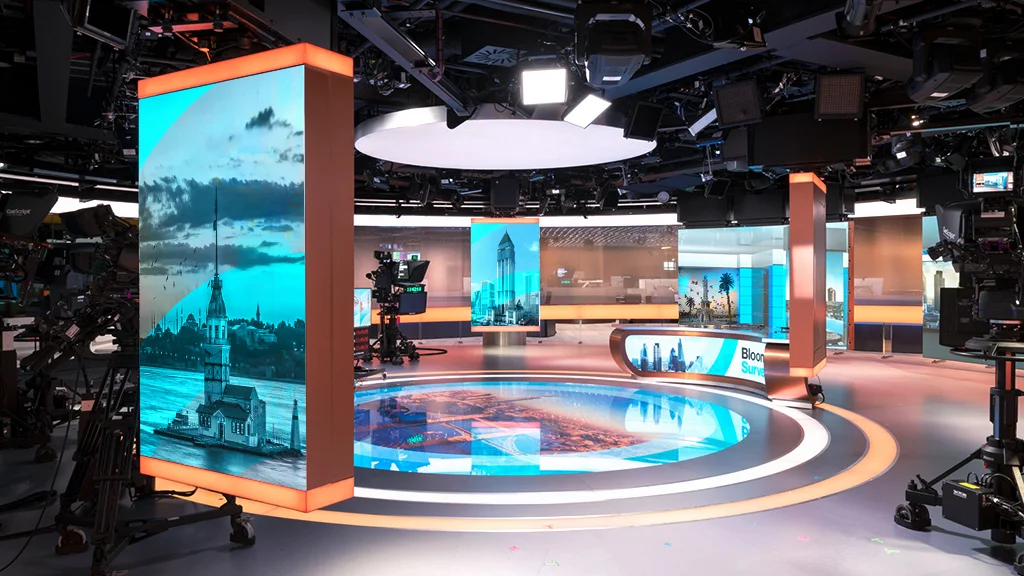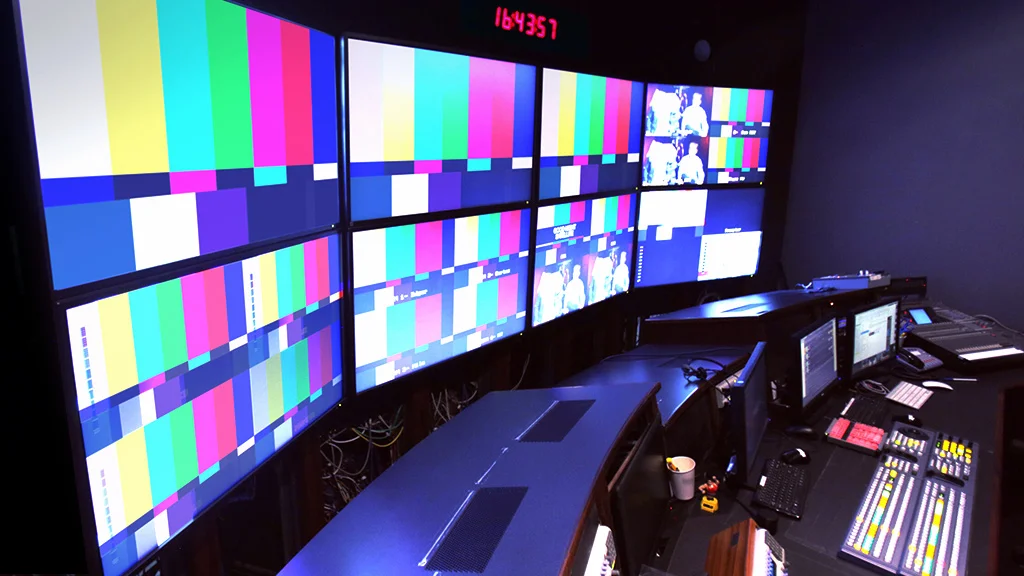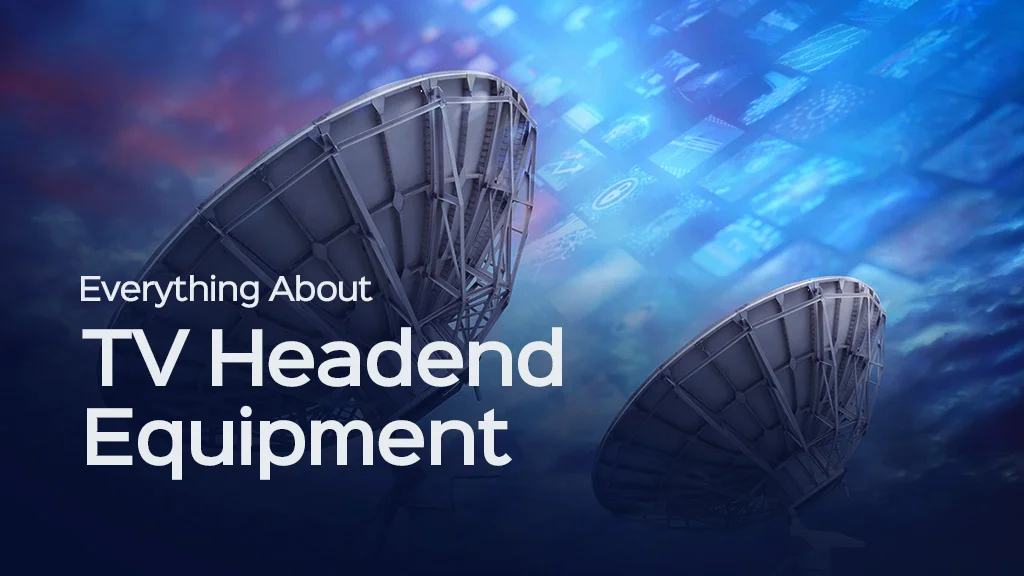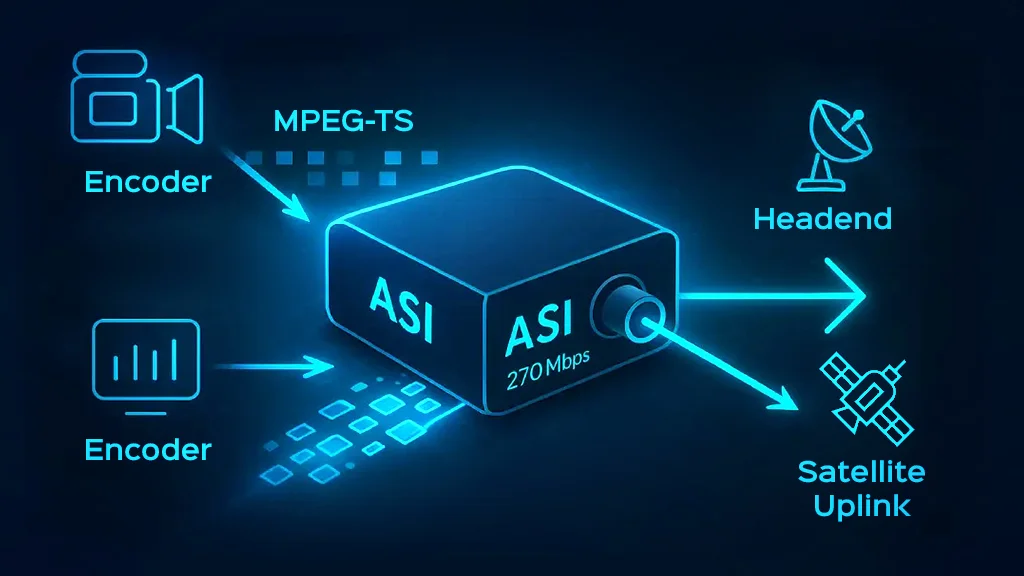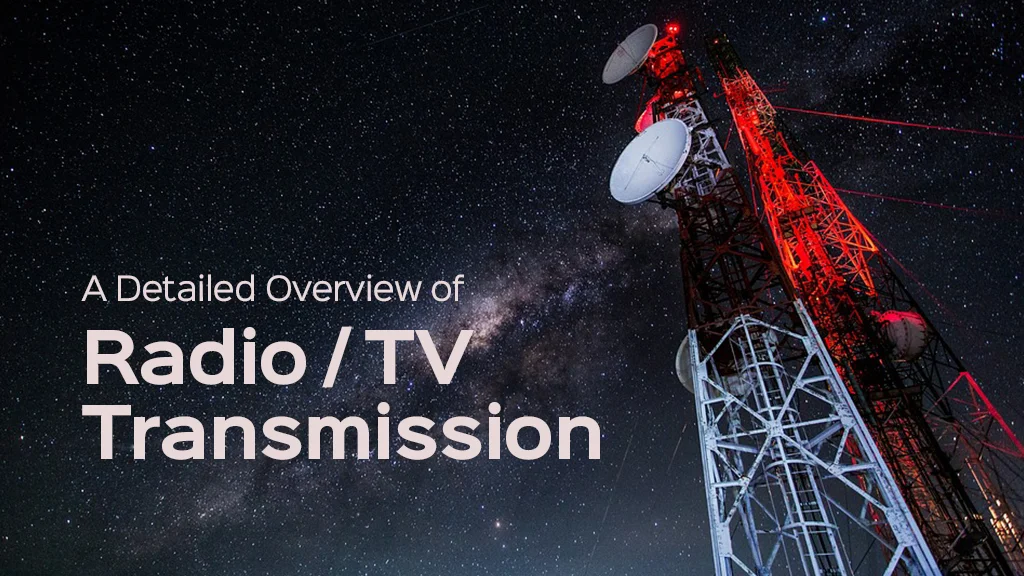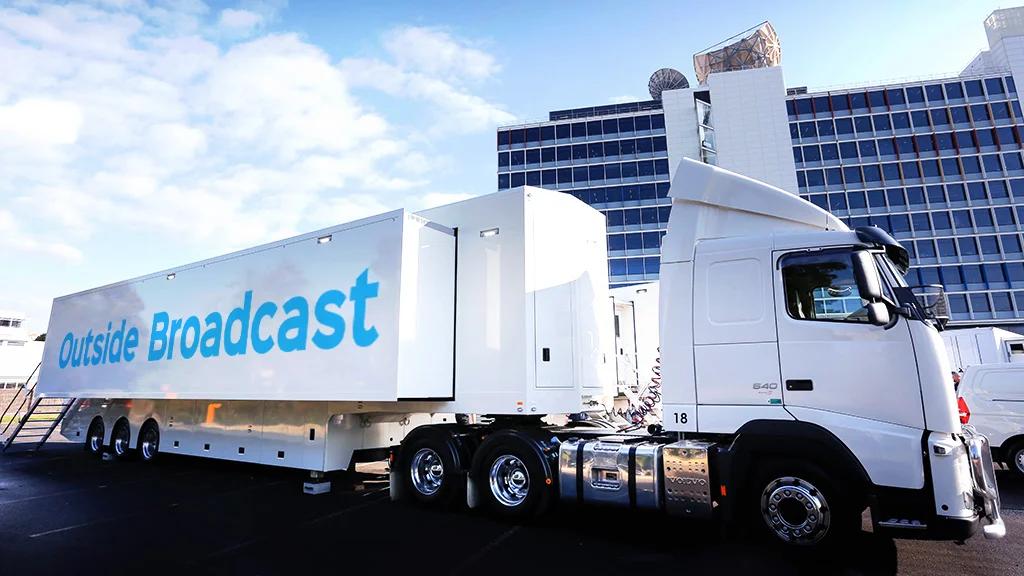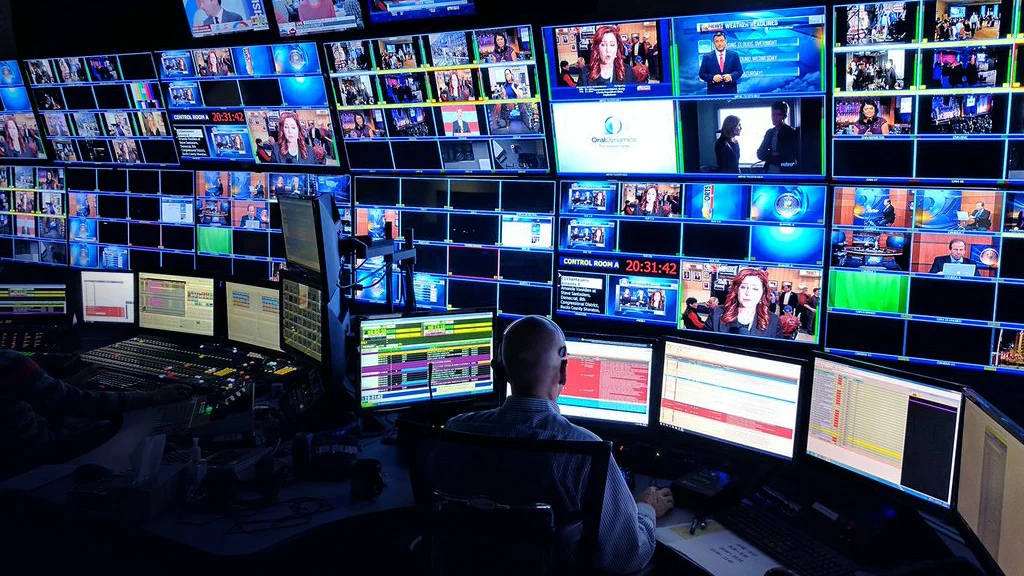
- Article
Building a TV Studio Essential Components, Automation, and Broadcasting Insights
Building a TV studio set is a complex endeavor that necessitates a comprehensive understanding of various components and workflows. This article explores the essential elements needed for a television studio set, highlighting the importance of planning, core broadcasting equipment, signal management, and automation. Additionally, it discusses the future of the TV studio and emerging trends that will shape its evolution.
Planning the TV Studio : Infrastructure before Equipment
When embarking on the journey of building a TV studio, careful planning is essential. Before diving into the selection of equipment, it’s crucial to focus on establishing a solid infrastructure. Here are key considerations to take into account:
Decide Studio Type
• News Studio: Designed for fast-paced reporting, this type requires adaptable setups with multiple camera angles, space for presenters, and integrated screens for displaying graphics and data.
• Production Studio: When building a studio for scripted shows and performances, it typically features elaborate set designs, specialized lighting, and sound scaping to enhance the production’s visual appeal.
Also, the production control room plays a vital role in this environment, serving as the hub for directing and managing various aspects of the production. Here, the production team coordinates camera feeds, adjusts audio levels, and oversees the overall flow of the broadcast.
• Multimedia or Online Studio: Smaller, versatile studios suited for streaming or online content creation, often designed for quick setups and flexibility to accommodate various production formats.
Studio Environmental Considerations
• Acoustic Treatment: Effective soundproofing is critical to ensure clarity in audio capture. This may involve insulation, strategic placement of sound-absorbing materials, and noise reduction techniques to keep external sounds at bay.
• Space Requirements: Consider the layout to facilitate crew movement and prevent congestion. Ensure there is ample space for equipment setup, storage, and possibly a live audience if required.
• Lighting Considerations: The studio should be designed to control natural light, with options to blackout windows or utilize adjustable lighting to create the right atmosphere for different productions. The placement of lights should be planned to minimize shadows and optimize quality.
Studio Workflow Design
• Production Flow: Establish a clear workflow that details how different stages of production will be executed—from pre-production planning and rehearsals to live broadcasts and post-production editing.
• Collaboration Areas: Designate areas within the studio for team collaboration, fostering communication among producers, directors, and technical personnel.
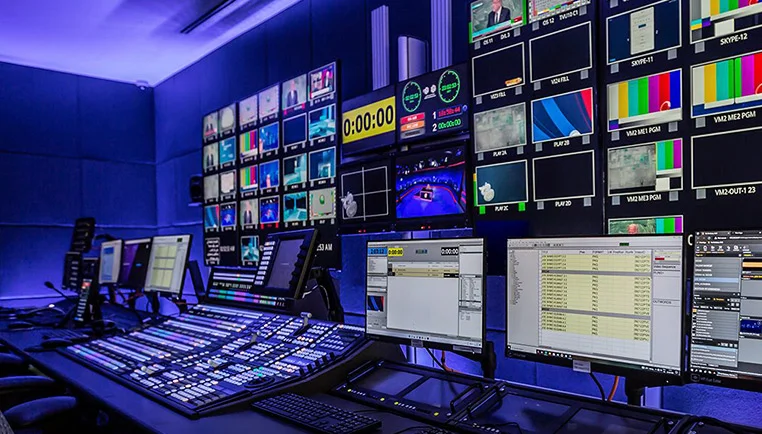
Core Broadcast Equipment in a TV Studio
The main broadcast equipment in a television studio includes: cameras, vision mixers (video production switchers), audio mixers, distributors, Synchronizing Pulse Generators (SPG), multiviewers, intercom panels, delayesr, embedders, de-embedders, playout systems, Character Generator tools (CG), Up/Down Cross-Converters, scan converters, players, and interfaces.
This TV studio equipment forms an integrated system essential for producing high-quality television content. Each component plays a specific role in capturing, processing, monitoring, and delivering audio and video feeds effectively within the broadcast environment. The seamless interaction of this equipment is crucial for maintaining broadcast standards and ensuring that productions run smoothly.
Signal Management in TV Broadcast studio
Effective signal management is crucial for ensuring smooth operations within a TV studio set. It involves the routing, monitoring, and transmission of audio and video signals to guarantee high-quality production and broadcasting. Here’s a detailed overview of the key components of signal management in a TV studio:
Signal Routing in TV Studios
Signal routing is the process of directing audio and video signals from their sources to the appropriate destinations within the studio. This includes:
• Switchers : In a TV broadcasting studio, Video switchers play a vital role in transitioning between different camera feeds and video sources. They allow operators to select, mix, and composite various video inputs for a cohesive final output. Advanced models offer features such as digital effects and transitions to enhance the broadcast quality.
• Audio Mixers: Audio mixers manage the various sound sources, adjusting levels, adding effects, and ensuring that the audio output corresponds precisely with the video feed. They provide the ability to balance sound from multiple microphones, instruments, and playback devices seamlessly.
• Video Routers: A Video Router serves as a central hub for managing multiple video sources and destinations. It enables operators to switch between different inputs and outputs seamlessly, ensuring efficient route management for TV broadcasting studio. This component is crucial for large-scale productions with numerous sources.
• Distributors: A Distributor routes audio and video signals from a single source to multiple destinations. It allows a single camera feed, for example, to be sent to multiviewers, vision mixers and technical monitor without losing signal quality. Distributors often include signal amplification and impedance matching to maintain the integrity of the signals.
Embedders & de-embedders: Embedder and de-embedder modules are crucial in a television studio for managing audio and video signals effectively. An embedder is responsible for inserting audio or ancillary data streams into a video signal, allowing them to travel together over a single output connection.
This is particularly useful in broadcasting scenarios where maintaining synchronization between audio and video is critical. On the other hand, a de-embedder extracts the embedded audio or data streams from the video signal for separate processing or monitoring. This is especially valuable in control rooms, where operators might need to isolate specific audio feeds for mixing or adjustment without affecting the main video signal.
By using embedder and de-embedder devices, TV broadcasting studios can streamline their signal flow, enhance flexibility in audio/video routing, and ensure that the audio remains aligned with the video throughout the editing and broadcasting processes.
Studio Monitoring Systems
Continuous monitoring is essential to maintain signal integrity and quality. Key components include:
• Multiviewers: Broadcast multiviewer modules provide a real-time overview of multiple video and audio feeds, enabling operators to monitor everything from camera angles to playback sources. This aids in immediate decision-making during live productions.
• Waveform Monitors and Vector scopes: These tools help operators analyze the technical quality of video signals by providing visual representations of signal waveforms and color balance. This analysis is crucial for ensuring high-quality video output.
• Audio Meters: Audio monitoring includes visual meters to track sound levels, helping operators identify potential clipping or loss of quality before it reaches the audience.
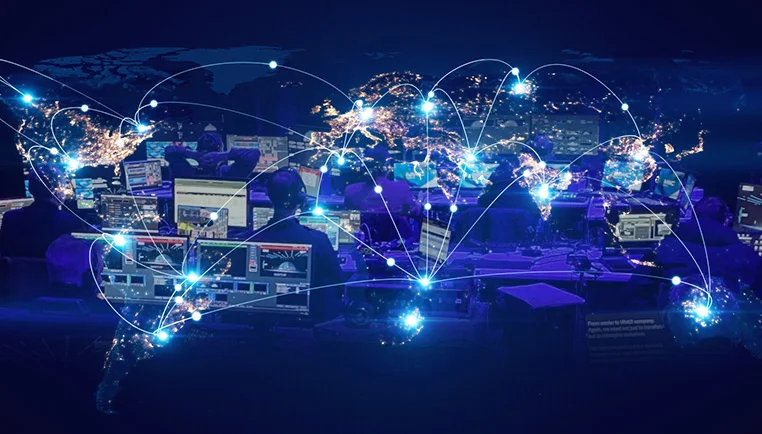
Transmission Methods in TV Studio
When building a TV studio, the transmission of signals from the studio to the broadcast medium is critical for successful output. This includes:
• Network Broadcasting: Utilizing a mix of traditional broadcasting methods like satellite and cable with digital platforms ensures broad reach. This requires careful management of signal quality throughout the transmission process to prevent degradation.
• Streaming Solutions: With the rise of online platforms, managing digital streaming signals has become essential. This involves setting up dedicated encoding and transcoding systems to prepare content for various devices and internet speeds.
• Backup Systems: To ensure reliability, TV broadcasting studios must implement backup systems for both audio and video signals. This includes redundancy in transmission lines and alternative sources in case of equipment failures to maintain an uninterrupted broadcast.
Redundancy in TV Broadcast Studio
In the fast-paced environment of a TV broadcast studio, redundancy is key to ensuring signal reliability. This includes:
• Hot Swappable Equipment: Using equipment that can be swapped out without interrupting broadcasting ensures that in case of failure, the production can continue.
• Failover Systems: Automatic switchovers to backup systems during failures help maintain consistent broadcast quality, minimizing downtime and audience disruption.
Automation in TV Studios
Studio automation in TV studios enhances efficiency, consistency, and quality across all production stages. By leveraging robotic camera systems, smart lighting, automated audio mixing, and playout systems, studios can streamline their operations and reduce manual efforts.
Camera Automation
Camera automation technology a key component of studio automation allows for greater precision in capturing video. Robotic camera systems can be programmed to move along predetermined paths, enabling dynamic shots that enhance storytelling without the need for manual operation.
Remote camera control allows operators to handle multiple cameras from a central location, facilitating seamless transitions between shots. Additionally, automated tracking systems can follow talent or moving elements within the studio, ensuring they remain in focus and framed correctly throughout the production.
Lighting Automation
Effective lighting is critical for setting the mood and improving the visual quality of a production, and automation plays a significant role here. Smart lighting systems enable technicians to program different lighting scenes and cues that can be triggered automatically during a production, allowing on-the-fly adjustments to adapt to scene changes. Automated dimming systems provide instant adjustments to light intensity, while advanced color control technologies can alter the color temperature of lights to match varying conditions or creative requirements.
Audio Automation
Automation in audio management enhances overall sound quality during productions. Automated mixing software manages audio levels for microphones, music, and sound effects, ensuring clarity and consistency throughout the broadcast. Pre-programmed sound effects can be triggered live, boosting storytelling and viewer engagement without demanding manual intervention.
Playout Automation
Playout automation systems further streamline content delivery and broadcasting. These systems manage the playout of video, audio and graphics sequences during live or recorded shows, ensuring smooth transitions between segments. Automation allows for scheduling content in advance, reducing the need for staff presence during off-hours while ensuring that programming airs as planned.
Additionally, real-time graphic automation integrates dynamic graphics and data live during broadcasts, offering viewers up-to-the-minute information. This capability enhances viewer engagement and keeps the content relevant, showcasing the power of studio automation in modern broadcasting.
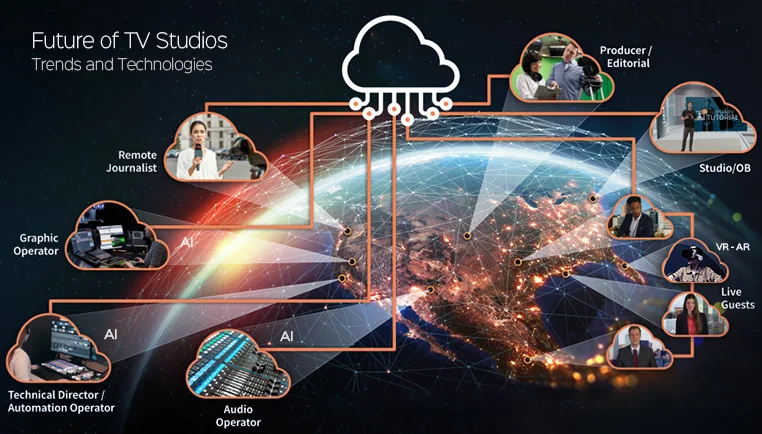
Future of TV Studios: Trends and Technologies
The landscape of television production is rapidly evolving, driven by technological advancements and changing audience preferences, shaping the future of TV studios.
Artificial Intelligence
The use of AI for automated editing, asset management, and audience personalization is set to increase, offering efficiency and tailored content delivery. Collectively, these advancements are redefining the future of TV studios, ensuring they remain at the forefront of media innovation and viewer satisfaction.
Remote Production
The demand for remote production capabilities is on the rise, allowing for broadcasts from various locations through reliable connectivity solutions.
Cloud-Based Solutions
Cloud technology is becoming integral to studio operations, enabling flexible content production, storage, and collaboration across teams regardless of location.
Virtual and Augmented Reality
Integrating VR and AR technologies into broadcasts creates immersive experiences that enhance storytelling and viewer engagement.
